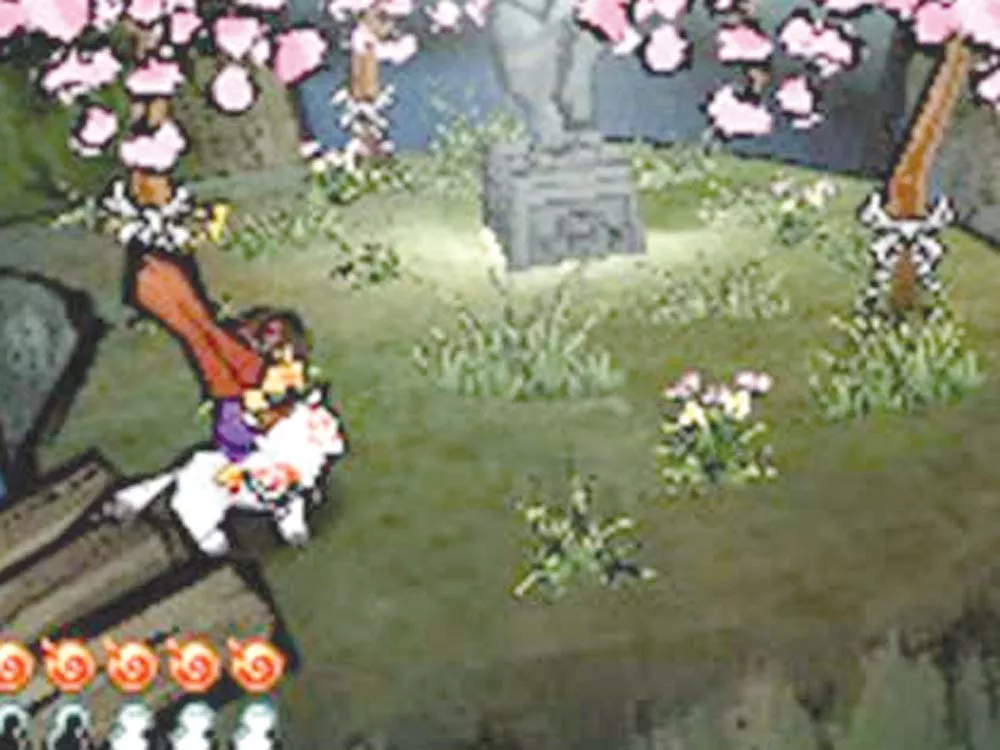The land of Nippon is sick. Patches of dying grass creep across fields and meadows. The skeletons of trees poke up into a murky, eggplant-colored sky. Stagnant ponds choke with decaying plants.
Acrid wisps of black cloud smother the sun.
It seems like I just cleaned this place up. But my notes tell me that I played the beautiful, memorable Okami back in 2006 when it was originally released for the PlayStation 2. Since then, Okami has gone on to become a cult classic, finally spawning this sequel for the Nintendo DS. Set nine months after the end of the original game, Okamiden puts me in charge of cleaning up the world I cleaned up half a decade ago.
As the child of the heroine of Okami, I am once again a dog — a white dog marked with orange and black calligraphy — who has the power of a god. Like my mother, I am able to alter reality with the sweep of a brush. The sun needs to shine? I just draw a circle in the sky — music plays, ink swirls around the heavens and a bright, spinning sun appears. Those spindly trees? A quick sketch fills their branches with bright cherry blossoms. And the dying plants? A horizontal line chops them down.
Like the first game, Okamiden adds an element of artistic creativity to a Zelda-like adventure. During most of my journey, I control the action with the traditional combination of directional pad and buttons. But when I encounter an aesthetic tragedy — a leafless tree, a broken vat of sake — I pull out the DS’s stylus and start to draw. During the game’s marvelous boss battles, I’m forced to use both control styles, sometimes simultaneously, making for challenging action sequences that recall the innovative gameplay of The World Ends With You.
The reward for all my effort is the restoration of Nippon. As I return the sunshine and drive the demons from the land, I watch a green tide sweep the countryside. Flowers spring from the ground, flinging their petals into the air. Waves leap from streams like dolphins. And the gnarled trunks of trees unfurl, scattering pink cherry blossoms across a robin’segg sky.
THE GOOD: Okamiden is almost as beautiful as Okami. Even on the DS’s small, low-resolution screen, the game offers more sophisticated visuals than many of today’s cutting-edge titles. The designers have taken the entire span of Japanese art, from the classical prints of Hokusai to the abstract modernism of Uchima, and brought it to life in the context of a videogame. More than just a backdrop, this artistic wonderland becomes the ideal setting for me to wield my stylus with style.
THE BAD: The various calligraphic powers quickly become overused — there are only so many puzzles that can be solved by drawing suns in the sky and tracing paths for my companions to follow. There is no true evolutionary combination of powers, merely the repeated application of one power after another. Only during the boss battles do the various brush techniques combine to become something more than just beautiful actions.
THE BOTTOM LINE: The pen is as mighty as the sword in the beautiful Okamiden.

